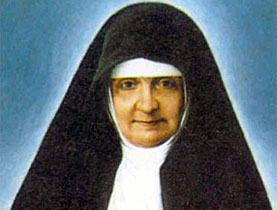
Swiss with “wide open heart” is new saint

Pope Benedict XVI has named a new Swiss saint - the first in 60 years and the first Swiss woman to be elevated to the sainthood in modern times.
Maria Bernarda Bütler (1848-1924) was a nun who left her native Switzerland to work among the poor and disadvantaged in Latin America, setting up her own order in Ecuador and later in Colombia.
She will be canonised in Rome on October 12.
Although better known for her social work, Sister Maria Bernarda had to be shown to have worked miracles to qualify for sainthood. She was beatified – the step before sainthood – by Pope John Paul II in 1995.
Last summer the Vatican finally attributed a healing miracle to Sister Maria Bernarda – the curing of lung disease in a Cartagena doctor – making canonisation just a matter of time.
The Swiss Bishops Conference welcomed the “rare” naming of a Swiss saint. “We are very pleased,” said spokesman Walter Müller.
Regula Grünenfelder, an education officer with the Swiss Catholic Women’s Union, said Sister Maria Bernarda was exemplary in many ways.
“As a personality she is very interesting. She is a woman who stands for global solidarity; she went to Ecuador and made a new opportunity there,” the doctor of theology told swissinfo.
“I think if she were living today she would be a global thinking feminist.”
Social engagement
Verena Bütler was born in 1848 in Auw, eastern Switzerland. At the age of 19 she entered the Capuchin Maria-Hilf convent in Altstätten. Just four years later – three years after taking the veil – she became mother superior.
A spokeswoman for the convent told swissinfo they were proud of the association with Switzerland’s soon-to-be saint.
But it is the time she spent in Latin America that earned Sister Maria Bernarda recognition.
Aged 40 she embarked on an adventurous journey to Ecuador, where she and six other nuns from the convent established an order devoted to teaching children and caring for the sick.
In 1895 armed conflict forced the nuns to flee to Colombia where Sister Maria Bernarda is said to have performed her miracles of healing, and where she died aged 76.
The order she founded continues to thrive, with more than 700 nuns spread out across Latin America where they are still involved in education and healthcare.
For Grünenfelder, one saying of Sister Maria Bernarda is particularly important and sums up the life of the saint: “You have to have a wide open heart.”
“I think she meant an openness to the whole of creation and the possibility to work for global peace,” the theologian said. Her global engagement was what made the nun so special, she added.
“The important thing is to take her as a role model for women in the Church today. With this open heart and global responsibility and concrete engagement, they can be a benefit [to society].
swissinfo, Morven McLean
The last Swiss to be canonised was the 15th century hermit known popularly as Bruder Klaus (Brother Klaus), St Nicholas of Flüe, who was made a saint in 1947.
He is regarded as Switzerland’s national saint. He mediated a quarrel between the members of the Swiss Confederation in 1481, which could otherwise have led to its collapse.
His advice “Don’t get involved in other people’s affairs” is seen as the founding principle of Swiss neutrality.
A number of Swiss cities claim to be the site of the martyrdom of early missionary saints, including Zurich (Regula and Felix) and Solothurn (Urs and Victor).

In compliance with the JTI standards
More: SWI swissinfo.ch certified by the Journalism Trust Initiative





























You can find an overview of ongoing debates with our journalists here . Please join us!
If you want to start a conversation about a topic raised in this article or want to report factual errors, email us at english@swissinfo.ch.